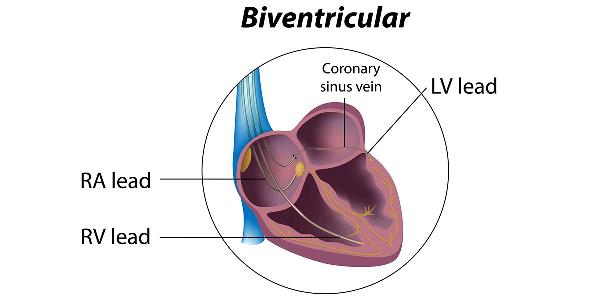Cardiac Resynchronization Therapy: A Lifeline for Heart Health

Strong 8k brings an ultra-HD IPTV experience to your living room and your pocket.
Heart failure affects millions of people worldwide, posing significant challenges to their health and quality of life. However, advancements in medical technology have introduced innovative treatments like cardiac resynchronization therapy (CRT), offering hope and improved outcomes for individuals with heart failure.
Understanding Cardiac Resynchronization Therapy
CRT is a specialized treatment designed to improve the coordination and efficiency of the heart's pumping function. It involves the implantation of a small device, similar to a pacemaker, that delivers electrical impulses to the heart muscle. These impulses synchronize the contractions of the heart's chambers, optimizing its pumping ability and restoring normal rhythm.
Procedure and Implantation
Before undergoing CRT implantation, patients undergo a comprehensive evaluation to assess their suitability for the procedure. The implantation itself is a minimally invasive surgical procedure performed under local anesthesia. Following implantation, patients receive post-operative care and undergo regular follow-up appointments to monitor their progress.
Benefits of CRT
cardiac resynchronization therapy offers a range of benefits for individuals with heart failure, including improved heart function, symptom relief, and enhanced quality of life. By synchronizing the heart's contractions, CRT helps reduce symptoms such as fatigue, shortness of breath, and exercise intolerance, allowing patients to engage in daily activities with greater ease.
Candidates for CRT
Not all individuals with heart failure are candidates for CRT. Patients must meet specific criteria to be considered eligible for the procedure, including certain heart function measurements and symptoms refractory to medical therapy. A thorough patient selection process ensures that those most likely to benefit from CRT receive appropriate treatment.
Risks and Complications
While CRT is generally safe and well-tolerated, it carries certain risks, including infection, bleeding, and device-related complications. However, healthcare providers take steps to minimize these risks through careful patient selection, meticulous surgical technique, and comprehensive post-operative care.
Efficacy and Success Rates
Numerous clinical studies have demonstrated the efficacy of CRT in improving heart function, reducing symptoms, and prolonging survival in patients with heart failure. Success rates vary depending on factors such as patient selection, device programming, and adherence to follow-up care, but overall, CRT has proven to be a highly effective treatment option for eligible individuals.
Cost and Accessibility
The cost of CRT implantation can vary depending on factors such as the type of device used, hospital fees, and geographic location. However, many healthcare systems offer coverage for CRT procedures, making them accessible to eligible patients. Efforts to improve the affordability and accessibility of CRT continue to enhance its availability worldwide.
Future Trends and Innovations
As technology advances, so too does the field of CRT. Ongoing research and development efforts seek to refine existing devices, enhance patient outcomes, and address limitations associated with current technology. Innovations such as leadless CRT systems and advanced programming algorithms hold promise for further improving the efficacy and safety of CRT in the future.
Patient Perspectives
For many individuals living with heart failure, CRT represents a lifeline to better health and improved quality of life. Real-life experiences of CRT recipients often highlight the transformative impact of this treatment, enabling them to resume activities they once thought impossible and enjoy a renewed sense of well-being.
Conclusion
cardiac resynchronization therapy plays a crucial role in the management of heart failure, offering significant benefits for eligible patients. By improving heart function, reducing symptoms, and enhancing quality of life, CRT represents a lifeline for individuals living with heart failure, providing hope and improved outcomes.
Note: IndiBlogHub features both user-submitted and editorial content. We do not verify third-party contributions. Read our Disclaimer and Privacy Policyfor details.







